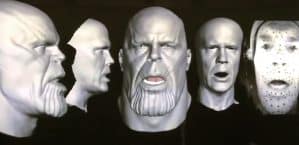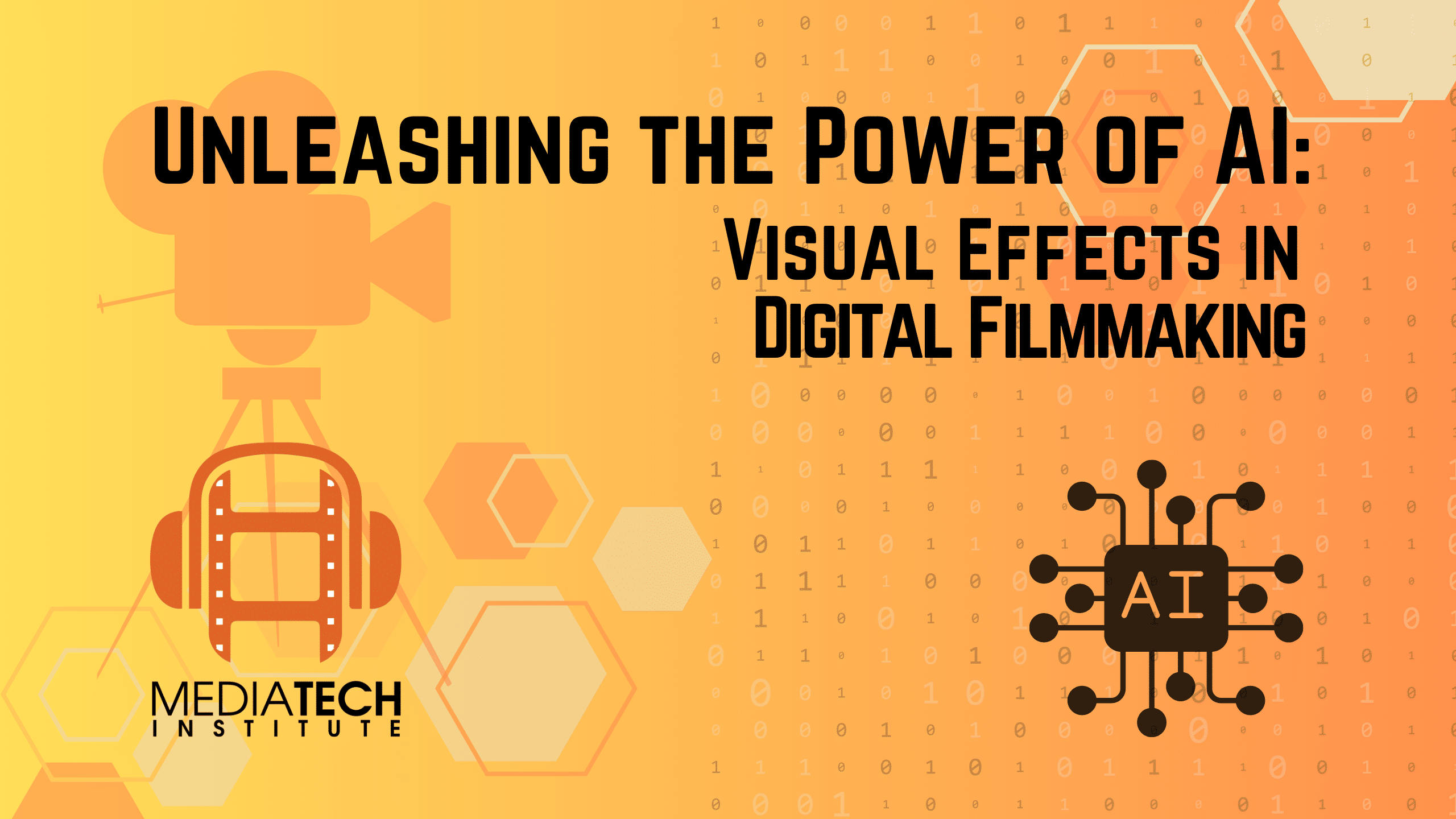Artificial intelligence (AI) is revolutionizing the visual effects (VFX) industry, making it possible to create more realistic, immersive visuals than ever before. At MediaTech Institute, we stay at the forefront of this revolution, teaching students how to leverage the power of AI to create stunning VFX in our “Animation and VFX” program.
One of the most significant ways that AI is impacting VFX is through the development of realistic CGI rendering. In the past, CGI rendering was a time-consuming and computationally expensive process. Take a look at the VFX sections in the end credits of any Marvel movie, and you’ll get a taste of how many teams of people it takes to generate such detailed effects.
Artificial intelligence algorithms can now be used to generate photorealistic CGI images in a fraction of the time; making it possible to create complex and detailed CGI environments, characters, and more that would’ve been impossible just a few years ago.
An influential area where AI is having an impact on VFX is facial animation; one of the most difficult things to perfect in CGI. Consider the infamous Henry Cavil “lip” incident back in 2017 when “Justice League” was released. Facial animation has been known for its laborious nature, for even seasoned industry professionals working on a major studio release.
impact on VFX is facial animation; one of the most difficult things to perfect in CGI. Consider the infamous Henry Cavil “lip” incident back in 2017 when “Justice League” was released. Facial animation has been known for its laborious nature, for even seasoned industry professionals working on a major studio release.
Traditionally, facial animation is a labor-intensive process, requiring artists to manually track and manipulate the facial features of 3D models. Artificial intelligence can now be used to automatically track and animate facial features, resulting in more realistic and expressive performances in way less time. The advancements to AI have made it possible to create characters that are more believable and engaging than ever before.
Motion capture, the process of recording the movements of a real actor and then transferring those movements to a 3D model, is another area where AI is having a major impact on VFX. These advancements are used in film, TV, and video games alike; revolutionizing the work being produced. VFX professionals are starting to expedite their process with the help of AI tools. Streamlined motion capture means quicker, higher quality content, and tighter teams of people necessary to produce said content. The most popular studios and films are heavily utilizing AI to achieve the massive, epic scenes that grace our silver screens today. A shining example of MoCap being used is “Avengers: Endgame” from 2019. The VFX team dedicated to character designs used AI to create realistic digital doubles for Josh Brolin’s “Thanos”; but AI was utilized in countless ways across the making of the titular finish to Marvel’s phase three.

In addition to the before-mentioned applications, artificial intelligence is also being used to improve a variety of other VFX tasks, such as rotoscoping, compositing, and crowd simulation. Some very popular examples of media utilizing these tools include “The Mandalorian”, taking George Lucas’s visions of creatures, like Yoda, and environments to the next level.
We can also observe heavy use of cutting-edge CGI and VFX artificial intelligence applications in any of the live-action remakes of classic animated Disney titles, like “Dumbo”, “Mulan”, and “The Lion King”.
In the 2019 live-action remake of “The Lion King”, we can see how far animation has come, comparing it directly to the original, drawn 2D animated classic. Both movies took about three years to complete, but the effects are completely different thanks to AI influence in the 2019 remake.
animated classic. Both movies took about three years to complete, but the effects are completely different thanks to AI influence in the 2019 remake.
As AI technology continues to develop, it is undoubtedly going to have an even greater impact on the VFX industry; but what does that mean for existing industry professionals?
Notice how each of the above mentioned films and TV shows are from major, industry leading studios? There’s a reason for that, as AI capable of these incredible advancements to VFX is incredibly expensive to develop and implement. The technology is not easily accessible, and the VFX companies equipped with these capabilities are being contracted by studios with a hefty price tag. Not to mention, the personnel requirements to use such technology; AI can be difficult to learn and use, and training capable employees isn’t free.
All this simply makes an already competitive industry even more competitive, which makes top tier education an essential element of success in VFX. Jobs are being streamlined to need less employees, and employees must be versed in the cutting edge technology to be viable creators.
MediaTech is committed to providing students with the skills they need to succeed in the rapidly changing VFX industry. By integrating AI training into its curriculum, MediaTech Institute ensures that its graduates are prepared to use the latest technology to create groundbreaking visual effects.
Students who graduate from MediaTech’s “Animation and VFX” program will be well-equipped to use AI to create groundbreaking visual effects for films, television, video games, and other media.
Overall, the use of AI in VFX is a positive development. However, it is important to be aware of the challenges involved in using AI and to take steps to mitigate those challenges. By doing so, VFX artists can use AI to create stunning and realistic visuals that will continue to be groundbreaking for the industry; promising to amaze audiences for years to come.
Take a tour
Are you ready to turn your PASSION into a PROFESSION? Daily tours are available from 10am-5pm and we welcome walk-ins. Each tour will last approximately 45 minutes.
If you’d like to book a tour in advance, you can book by calling the campus directly or by using the scheduling buttons to book online and choose a time that works best for you.

